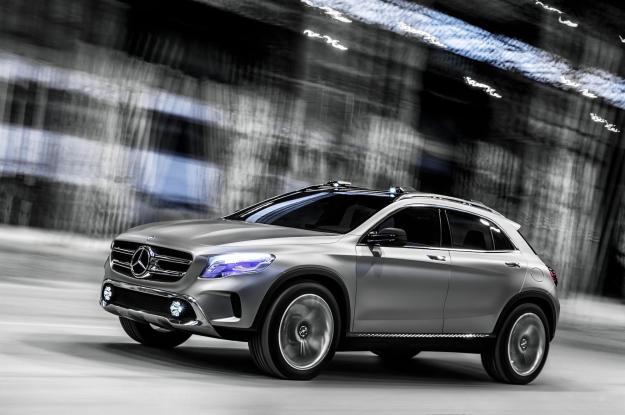
Mercedes-Benz has gone and broken our hearts. The German brand currently in a battle for luxury supremacy has gone and toned-down the looks and lines of its forthcoming GLA compact crossover SUV.
The GLA, which originally debuted at the Shanghai Auto Show looked like the slightly sleeker, sinewy, sporty compact crossover that we’ve long wanted from Mercedes. Based upon the spy photos snapped by Autocar, the looks of the GLA have been neutered a bit.
Based upon the A-Class, which isn’t sold in America, the GLA is set to follow in the footsteps of the new entry-level American Mercedes called the CLA. If you’ve not heard of the CLA yet, you’ve clearly been living under a rock.
While the CLA compact sedan seemed intriguing, we are a bit more fascinated by the GLA, as it stands as Mercedes’ answer to the BMW X1, Audi Q3, and Range Rover Evoque. We like compact luxury sedans, sure. But we find tech-savvy compact crossovers like the X1 a bit more enticing.
Unlike its European rivals, we’re hoping the GLA will feature a diesel engine option as well as a peppy gasoline powerplant.
The standard GLA bodylines might be a bit more boring but the GLA45 AMG should be closer to the concept we saw in Shanghai. It’ll be powered – just like the CLA45 AMG – by a direct-injected 2.0-liter inline four-cylinder gasoline engine that will produce near 355 horsepower.
Look for the final production-ready GLA later this year.


